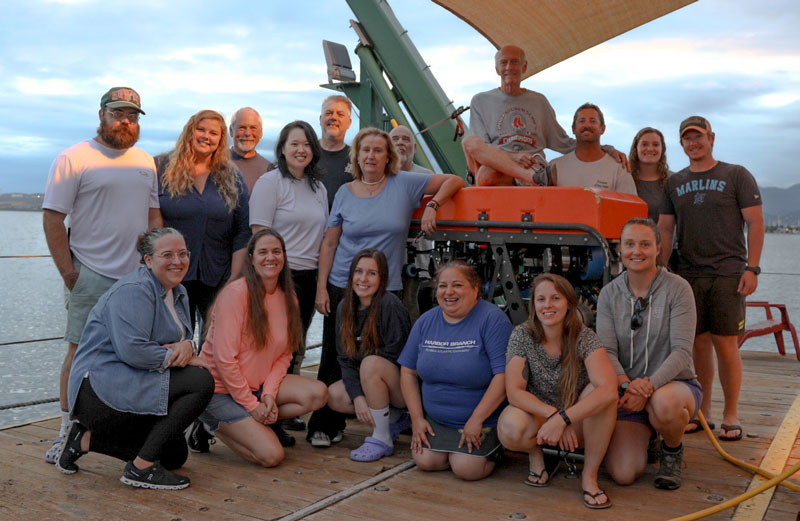Exploration of Deepwater Habitats off Puerto Rico and the U.S. Virgin Islands for Biotechnology Potential
Diversity and Representation at Work at Sea

Do you notice something interesting about this picture? In a crew of 17, 10 are women! Seven of the eight science crew members are women; two of the three remotely operated vehicle crew members are women; and the ship’s second mate is a woman. This means women represented 59% of the expedition team, which is higher than the national average. Every two years, the National Science Foundation (NSF) publishes a report on the representation of women and minorities in science, technology, engineering, and mathematics (STEM) fields. In the report for 2023, women in STEM occupations represent only 35% of the workforce.
But that’s not all, six of these women have doctoral degrees, including two Latinas. Another Latina with a doctorate will do shoreside taxonomy of the samples based on their DNA. This again is of note, as the 2023 NSF report states that only 9% of Hispanics or Latinos have a doctoral degree. We also had a Latino as part of the ship crew. Three of these four Latinos speak English as a second language.
Another noteworthy characteristic of our team is the many different disciplines we represent. We sailed with a coral biologist, a sponge taxonomist, a chemist, a cancer immunologist, a chef, a captain, and a couple of mechanics, just to name a few. This shows it takes a diversity of expertise to make an expedition a success.
I call attention to this level of representation so that, hopefully, other women will see themselves reflected here and realize that they too can join these fields or contribute to expeditions such as ours, even in roles where women are not traditionally seen. As part of this project, we are conducting outreach with the Boys and Girls Club of St. Lucie County. We chose this organization because the majority of participating students are Black, and we want to show them that people of all backgrounds can contribute to this kind of research and that there is not just one, but many, career paths that can get them there.
By Esther Guzmán, Harbor Branch Oceanographic Institute, Florida Atlantic University
Published July 24, 2024